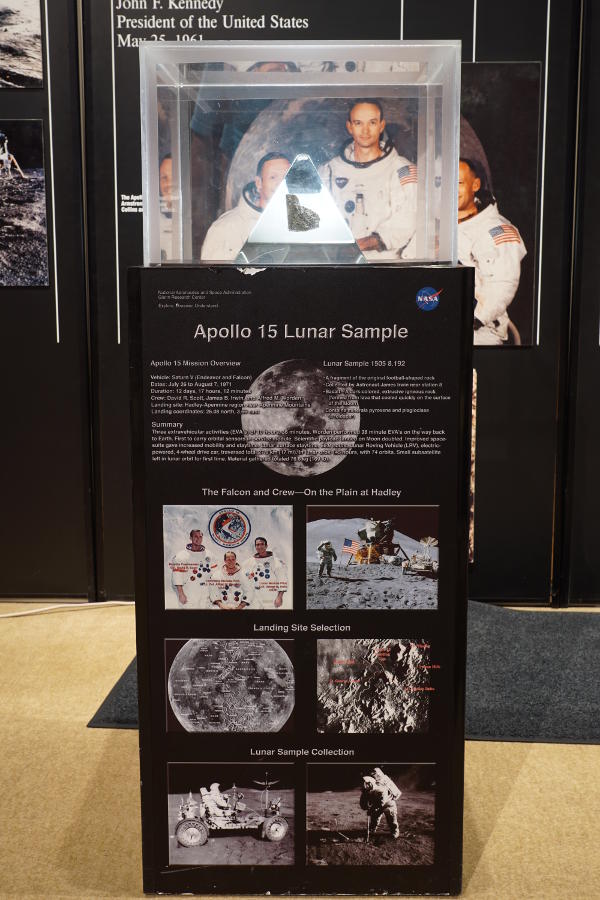Moon Rock Composite
The moon rock display at Glenn Research Center's travelling Celebrating Apollo exhibit, as is the case with many moon rocks, is embedded in lucite and placed on a lighted stand. This makes it difficult to properly expose both the moon rock (which is very bright) and the rest of the display.
I've combined two photos into a single image, creating a picture more visually representative of the scene.
Click image for a 4000x6000 pixel version of this image in a new window.
Photo and composite by heroicrelics.
This is a fragment of lunar sample 15058 [direct link to 3.0 megabyte PDF]. 15058 was cut into several sections, and one corner [direct link to 1.1 meg PDF] was subsequently cut into four display samples, the fragment on display being named "15058,192".
The Lunar and Planetary Institute has many photos of the original 15058 sample, as well as photos of the various sections into which 15058 was cut. NASA photo S71-60657 shows the corner of 15058 from which sample 192 was cut. Photos S76-24635, S76-24637, and S76-26075 show sample 192 itself.
The text on the pedestal reads
Apollo 15 Lunar Sample
Apollo 15 Mission Overview
- Vehicle: Saturn V (Endeavor and Falcon)
- Dates: July 26 to August 7, 1971
- Duration: 12 days, 17 hours, 12 minutes
- Crew: David R. Scott, James B. Irwin, and Alfred M. Worden
- Landing site: Hadley-Apennine region near Apennine Mountains
- Landing coordinates: 26.08 north, 3.66 east
Lunar Sample 15058,192
- A fragment of the original football-shaped rock
- Collected by astronaut James Irwin near station 8
- Basalt - A dark-colored, extrusive igneous rock (formed from lava that cooled quickly on the surface of the Moon).
- Contains minerals pyroxene and plagioclase (a feldspar)
Summary
Three extravehicular activities (EVAs) of 10 hours, 26 minutes. Worden performed 38-minute EVA on the way back to Earth. First to carry orbital sensors in service module. Scientific payload landed on Moon doubled. Improved spacesuits gave increased mobility and staytime. Lunar surface staytime: 66.9 hours. Lunar Roving Vehicle (LRV), electric-powered, 4-wheel drive car, traversed total 27.9 km (17 mi). In lunar orbit 145 hours, with 74 orbits. Small subsatellite left in lunar orbit for first time. Material gathered totaled 76.6 kg (169 lb).

